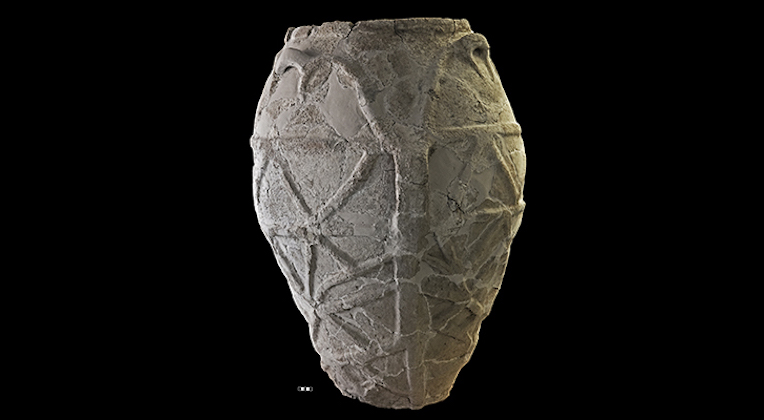4,000-Year-Old Jar Contains Italy's Oldest Olive Oil

An egg-shaped ceramic jar covered with ceramic "rope" once held a prize delicacy: the oldest olive oil on record in Italy, a new study finds.
Researchers made the discovery after analyzing residue of the so-called liquid gold on the beautiful jar and two other vessels uncovered at Castelluccio, an archaeological site in Sicily.
"It had the signature of Sicilian tableware dated to the end of the third and beginning of the second millennium B.C., [during the] Early Bronze Age," Davide Tanasi, an assistant professor of history at the University of South Florida, said in a statement. "We wanted to learn how it was used, so we conducted chemical analysis on organic residues found inside."
The finding shows that the ancient people of Italy made and used olive oil at the end of the third millennium B.C., a good 700 years earlier than experts previously thought, the researchers said. [Photos: Ancient Pottery Once Held Olive Oil]
Archaeologists have known about the ceramic jar for a while; archaeologist Giuseppe Voza found it while directing excavations in Castelluccio, an ancient site dating back to the Bronze Age, in the 1990s. During the dig, archaeologists identified a site on a rocky ridge with 12 huts. The jar came from one of those huts, the researchers said.
However, the ancient jar was shattered. So conservators from the Paolo Orsi Regional Archaeological Museum of Syracuse, in Italy, restored and reassembled 400 ceramic fragments, reconstructing the egg-shaped, 3.5-foot-tall (1 meter) olive oil container, which an ancient artisan had decorated with rope bands and three vertical handles on each side.
As luck would have it, archaeologists at the site also found two fragmented basins with internal dividers, suggesting that these vessels were used to hold multiple substances. They also found a large terra-cotta cooking plate.
Sign up for the Live Science daily newsletter now
Get the world’s most fascinating discoveries delivered straight to your inbox.
In the new study, the researchers tested the three ceramic containers and found that all three vessels had organic residue containing oleic and linoleic acids, which are signatures of olive oil.
"The results obtained with the three samples from Castelluccio become the first chemical evidence of the oldest olive oil in Italian prehistory, pushing back the hands of the clock for the systematic olive oil production by at least 700 years," Tanasi said.
Besides this new finding, the only known ancient storage jars with chemical signatures of olive oil in Italy were from the cities of Cosenza and Lecce, in southern Italy, that are thought to date to the Copper Age, during the 12th and 11th centuries B.C.
However, the Italian olive oil discoveries aren't the oldest in the books. An analysis of 8,000-year-old clay pots from what is now Israel also revealed the signatures of olive oil, Live Science previously reported. That finding supports research suggesting that olive trees were domesticated about 6,000 to 8,000 years ago.
Meanwhile, the oldest Italian wine on record dates to nearly 6,000 years ago and was also found at an archaeological site in Sicily, Live Science preciously reported.
The new study was published online May 7 in the journal Analytical Methods.
Original article on Live Science.

Laura is the archaeology and Life's Little Mysteries editor at Live Science. She also reports on general science, including paleontology. Her work has appeared in The New York Times, Scholastic, Popular Science and Spectrum, a site on autism research. She has won multiple awards from the Society of Professional Journalists and the Washington Newspaper Publishers Association for her reporting at a weekly newspaper near Seattle. Laura holds a bachelor's degree in English literature and psychology from Washington University in St. Louis and a master's degree in science writing from NYU.









